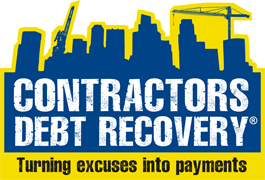Enforcing Your Judgement Options
Video Transcript
Hi, there. Anthony from Contractors Debt Recovery again. Today, we’re going to talk about enforcing judgment. How do you get a judgment against someone who is not paying you either through adjudication under security of payment or statement of claim process through court? You can get a judgment that can be filed in court or registered in court as judgment against your debtor.
Now enforcing judgment is the fun part of the whole process. This is where you get your money. This is where you enforce the righteousness you’d manage to achieve through your payment dispute or through adjudication or whatever process you’ve gone through to get judgment. Not enough people are interested in it. Oh yeah, we won. We won the case.
Well now what? Now you want to get your money. Wasn’t that the point of the whole process? So what do we do? Here are the options available to you generally around Australia in various forms. The first one is a garnishee order. You can get an order from the court for an order to be served on a bank where your client banks to suck the money out of their account.
If the judgment debt is $27,500 there will be a garnishee order you can get. Send it to the bank. They’ll look for your client’s account. If its there, they’ll take the money out or take as much out as it in the account. If it’s less than $27,500 they’ll take out what’s there. All right. If you don’t know where your client banks, you can simply garnishee bank after bank after bank at no extra cost until you hit some pay dirt. I’ve certainly done that a few times. So, garnishee orders, for sheer entrainment value that’s your no. 1 choice because there’s no warning, the money just comes out.
Second you can do a writ for levy on property otherwise known as sending the sheriff around. The sheriff will come around to your client’s business or where they have property or vehicles or plant machinery and seize it, with the intent to auction it off and pay you out of the proceeds. Now whenever I send sheriffs around they’d usually walk out with a cheque from the client and that settles the dispute. So that is open to you, a writ of execution, a writ for levy on property or send the sheriffs around to seize property and sell it at auction.
The third one is a statutory demand. You serve the creditors statutory demand on your client after you’ve achieved judgment. They have 21 days to pay or you can begin the wind up process. You can basically assert that they’re trading while they’re in insolvent and move on from there. So that’s a very powerful lever to get your client to come out from under a rock and to pay you or to at least force a settlement.
The fourth one is an instalment order. So when you have a judgment against a client you can agree that they pay you by instalments. But an instalment order is basically an agreement for them to pay you, but that’s an agreement they make with the court, not with you. So it’s got some glue to it. An instalment order is so you can agree how much they pay you and what date every month they pay.
So just to summarise, some ways to enforce your judgment are a garnishee orders, a writ for levy on property (send the sheriffs around), a statutory demand and an instalment order. Therefore big news for you…think about it. And remember don’t lose interest when judgment that’s only half the job. Getting your money is the full deal. I’ll see you next time.
